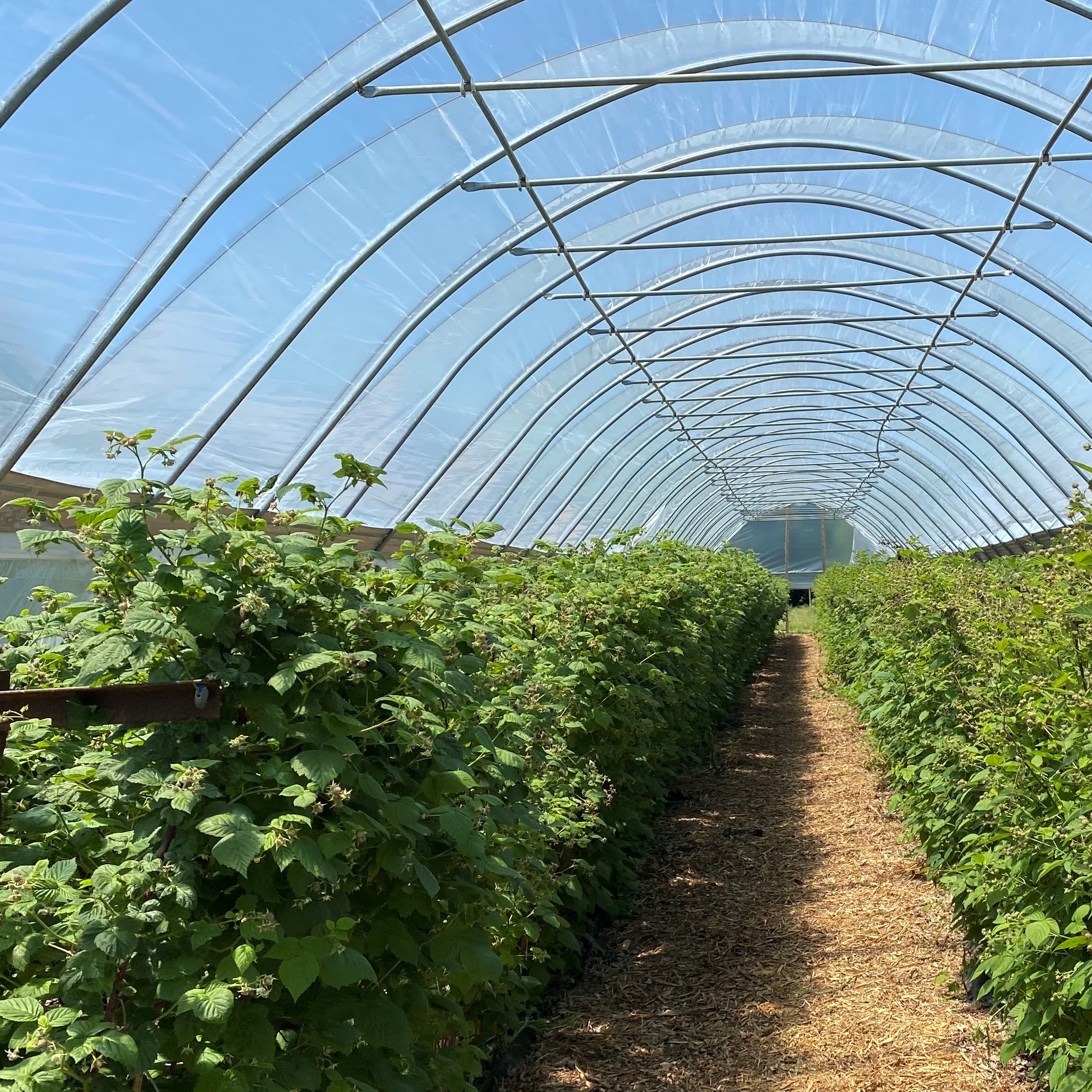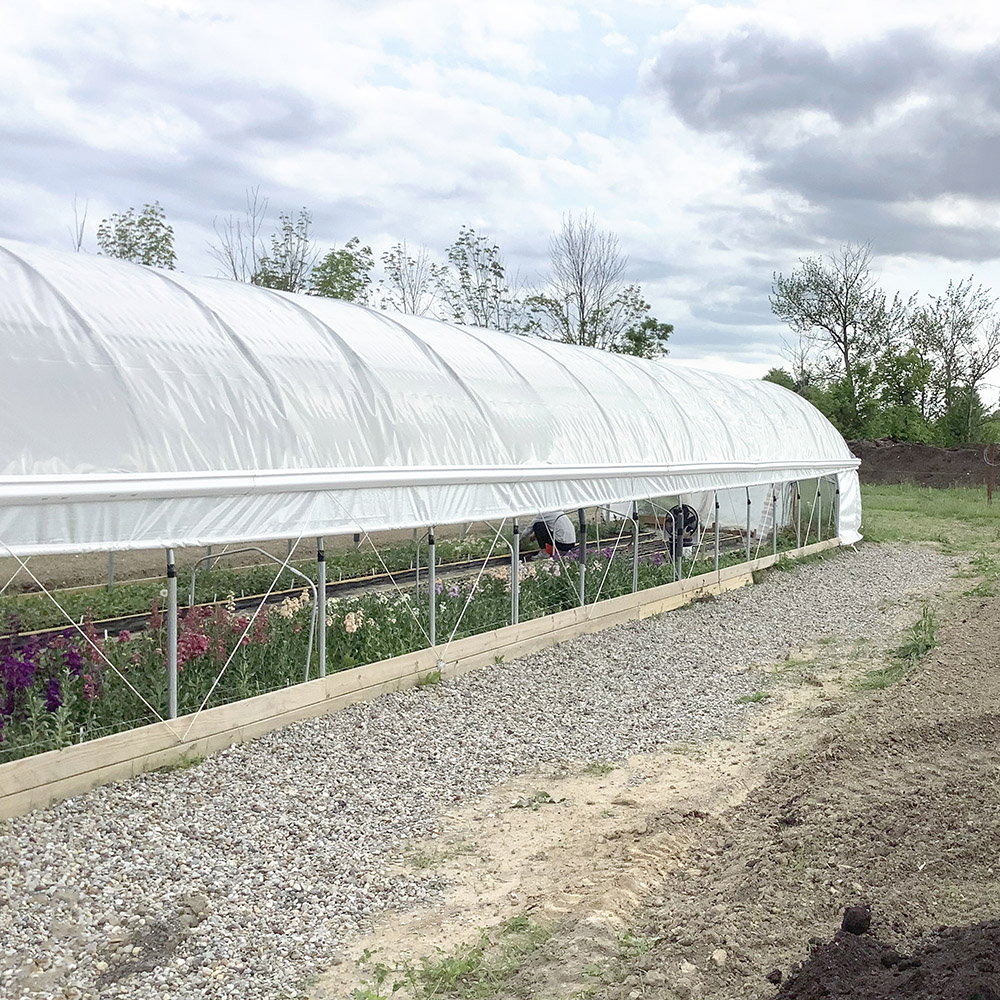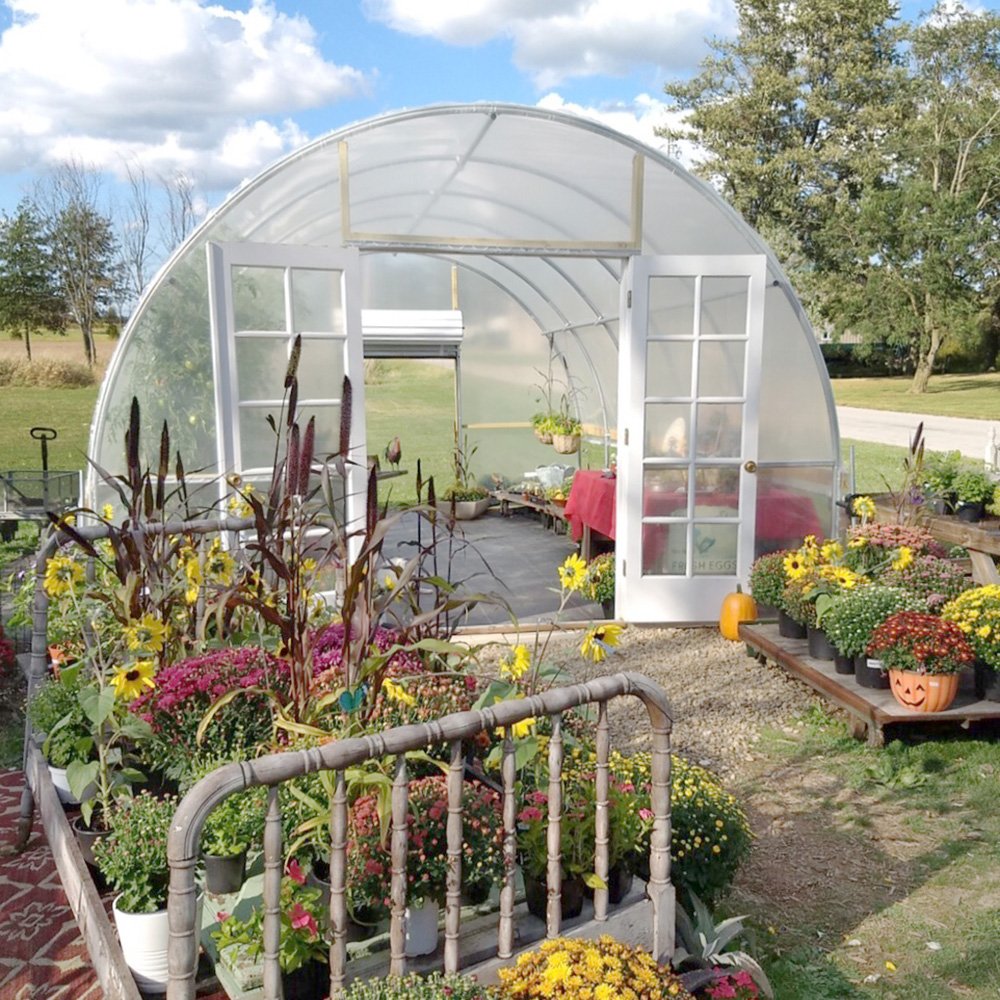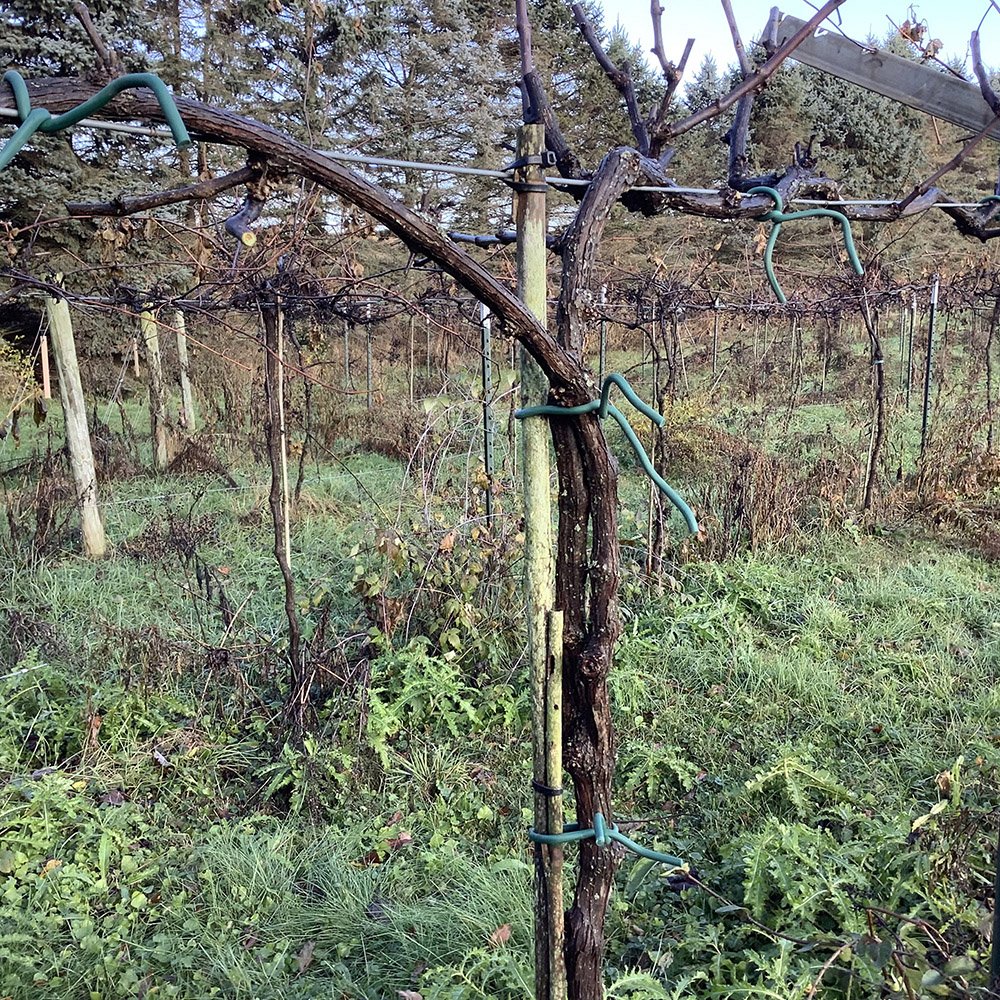Glass VS Polyethylene Greenhouses: Which is best?

Choosing the right greenhouse materials for your needs is key to having a successful garden. Whether you have a small greenhouse used for just a few plants or an entire enclosed vegetable garden using a large structure, the material does not differ much. Though it may seem like a large and daunting project, the correct information and guidance regarding what materials to purchase can help ease those fears. So, let’s go through and talk about the different types of structures, their coverings, and then some tips for light and heat efficiency.
Greenhouse Structures
The design and materials of a greenhouse structure can significantly impact its productivity and efficiency. The basic structure of a greenhouse includes rafters, end walls, side posts, sidewalls, and purlins (the horizontal beams to the rafters). The components make three types of greenhouses: detached, lean-to, and gutter. Each of these structures can be used for personal or commercial use. However, some may be better suited than others for your needs. Typically, lean-to greenhouses are attached to a home or other structure, making them more common for smaller, personal gardens. Detached greenhouse structures can be placed almost anywhere and can be configured in virtually any size, making them ideal for commercial growers but still very usable for commercial and non-commercial (residential) growers alike. Commercial growers most commonly use gutter-connected greenhouses. Gutter-connected is the term used for greenhouses that are connected.
The structure of a greenhouse, the flooring, and the greenhouse coverings can each be made out of a different combination of materials which plays a role in its effectiveness. Plants will only be as strong as their environment allows, so making sure that you have the right materials for your plants to thrive is essential.
The Structure
The overall structure or skeleton of the greenhouse can be made from aluminum, galvanized steel, wood, or plastic, such as PVC. All the different greenhouse structure materials have different coverings and panels. Steel frames typically use polyethylene sheets or polyvinyl chloride (PVC) based fabrics. Steel frame with plastic grow film tends to be the most common and cost-effective type of greenhouse. It also allows for multiple configurations and ease of repair.
Flooring
Typically, the floor of a greenhouse consists of dirt, gravel, or concrete. The flooring material does affect the greenhouse’s heat efficiency and light transmission. Dirt and gravel floors do not retain heat or protect plants from pests. However, it is an excellent choice for water drainage or ground planting. Concrete does retain heat, and porous concrete will allow for water drainage. However, it does eliminate the possibility of ground growing.
Coverings
Glass, fiberglass, acrylic, polyethylene film, polyvinyl chloride, and polycarbonate are common greenhouse coverings. The covering is the most important aspect of the greenhouse. This is because it directly controls how much light your plants will receive. Different materials are made to precisely control the light allowed to pass through, offering varying diffusion. Some materials completely block out all sunlight used to grow specific crops. Exercise caution when deciding which material is suitable for you because too much sunlight overheats plants, while too much shade can cause plants to die from an energy deficiency.

Customer Installation Using Jiggly Greenhouse® Apex Grow Film
Polyethylene
Polyethylene film is inexpensive, lightweight, easy to patch and repair, and can conform to any structure, making it very easy to use. That leads to why polyethylene is one of the most commonly used greenhouse coverings. Oxygen and carbon dioxide can pass through this greenhouse film because of its porous nature, allowing the plants to breathe even in a tightly sealed greenhouse.
Polyplastic film is excellent for growers because you can customize the material with different coatings and build it in any configuration needed. A UV stabilizer can be used on the poly film to slow its degradation from the sun and decrease the yellowing effect. There is an anti-drip coating that will help to prevent excessive condensation. There is also poly glazing that will help to diffuse light. This allows growers to maximize space by ensuring that all plants receive sunlight.
Poly reduces heat loss by 30% to 40% compared to glass. That is a significant heat retention benefit. Most poly film ranges from an R-value of .87 to 1.7. Like polycarbonate, poly can come in multiple layers to bring additional durability and other benefits.
Shop Greenhouse Film
Polycarbonate Greenhouses
Polycarbonate greenhouses are made from thick plastic, making them both cheaper and more versatile than the traditional glass greenhouse. Although it is a better material to use than glass in some ways, it still has its issues. These greenhouses are commonly built in both a single-wall and a double-walled configuration.
| Glass | Polyethylene | Polycarbonate | |
| Light Transmission | Exceptional clarity with superior light penetration | Delivers excellent light diffusion for even plant growth | Strong light transmission with built-in UV filtering |
| Durability | Long-lasting when properly maintained; more fragile | Flexible and tear-resistant with reinforced film options | Highly impact-resistant and built for tough conditions |
| Insulation | Natural material with minimal insulation value | Good insulation when using double-layered film systems | Excellent thermal insulation with multi-wall panels |
| Cost | Premium investment for long-term installations | Budget-friendly with great value for performance | Moderate investment with long-term durability |
| Weight | Heavy; ideal for robust permanent structures | Extremely lightweight and easy to install | Lightweight panels simplify setup and maintenance |
| UV Protection | May require coating for UV resistance | Available with advanced UV-stabilized formulations | Strong built-in UV protection in most panel types |
| Lifespan | Decades of use with proper care | Typically lasts 4+ years, easily replaceable as needed | 10-15 years of reliable protection |
| Maintenance | Requires careful cleaning and occasional pane replacement | Low maintenance and easy to replace if damaged | Minimal upkeep with long-term performance |
| Best For | Permanent, visually appealing greenhouses | Growers seeking affordable, versatile, and user-friendly solutions | Growers needing long-lasting panels in varied climates |
Single Wall
Single-walled polycarbonate coverings may be more durable and cost-effective than glass, but they still have some issues you should consider. First, the single-wall polycarbonate sheets do not diffuse light nor insulate heat very well. The R-value (the insulation value) of a single-wall polycarbonate covering is just .83. Simultaneously. Horticultural glass holds an R-value of .93. Regarding light transmission, and it is also inferior to glass. Roughly 94% to 96% of light passes through, while 97% to 98% of the light goes through horticultural glass. Single-wall polycarbonate is not ideal for growers because it is a flammable material making it difficult to insure.
Twin-Wall or Double-Wall
Twin-wall polycarbonate is better than single-wall polycarbonate in almost every way. Double-wall polycarbonate's r-value jumps to 1.42, making it better than single-pane. Twin-wall also diffuses light, but only 80% to 84% of light passes through the panels. Additionally, polycarbonate panels are known to cloud over time. This clouding is often referred to as yellowing. If you choose to use polycarbonate panels, you need to monitor this yellowing effect because it will greatly reduce light transmission (the light passing through to the plants) through the panels. Condensation can also be an additional issue for twin-wall polycarbonate, leading to plant disease and poor light retention and transmission.
Shop Greenhouse Plastic Shop Greenhouse Frame Fittings Top Greenhouse Construction Materials for All ClimatesFrequently Asked Questions
What Is the Best Greenhouse Covering Material for Beginners?
For beginners, polyethylene film is often considered the best greenhouse covering. It is affordable, easy to install, and doesn’t require heavy framing like glass. Polyethylene is also available in UV-stabilized varieties, providing decent protection for plants. Its forgiving nature makes it ideal for trial-and-error learning in greenhouse gardening.
How Long Do Polyethylene Greenhouse Covers Typically Last?
Most polyethylene greenhouse films last between 3 to 5 years depending on the quality of the material and environmental conditions. UV-treated polyethylene extends lifespan by resisting degradation from sunlight exposure. While it may not last as long as glass or polycarbonate, it’s relatively inexpensive and easy to replace. Proper care, such as keeping it clean and well-secured, can maximize its lifespan.
Does Glass Offer Any Advantages Over Plastic Coverings?
Yes, glass has several advantages, particularly in aesthetics and light clarity. It offers the highest level of visible light transmission, which is ideal for sun-loving plants. Glass is also very durable when not impacted and can last decades with proper maintenance. However, it’s heavier, more expensive, and more fragile than plastic alternatives.
Is Polycarbonate a Good Long-Term Greenhouse Investment?
Polycarbonate is an excellent choice for growers looking for a long-term solution. It offers superior durability, impact resistance, and thermal insulation compared to glass and polyethylene. Multi-wall polycarbonate panels are particularly good at retaining heat, which can reduce heating costs in colder climates. Though more costly upfront than polyethylene, the longevity and efficiency make it a cost-effective investment over time.
What Factors Should I Consider When Choosing a Greenhouse Cover?
Key factors include your budget, climate, intended use, and maintenance preferences. If you need high durability and insulation, polycarbonate may be best. For low upfront cost and flexibility, polyethylene is ideal. Aesthetic appeal, longevity, and superior light clarity might lead you to choose glass. Each material has unique strengths depending on your gardening goals.
Can I Switch Greenhouse Coverings Later If I Change My Mind?
Yes, it is possible to switch coverings as your needs evolve. Many greenhouse frames can be adapted or replaced to accommodate different materials. For example, a structure that initially supports polyethylene film can often be upgraded to hold polycarbonate panels with minor modifications. Planning for adaptability during the initial build can simplify future changes and make your greenhouse more versatile.
Contact Us
Choosing the right greenhouse covering is essential to creating a productive and sustainable growing environment. Whether you're drawn to the classic appeal of glass, the practical affordability of polyethylene, or the durability of polycarbonate, each material offers unique benefits tailored to different needs. Our comprehensive guide helps you weigh the pros and cons so you can make the best decision for your garden or commercial setup. At Jiggly Greenhouse®, we’re here to provide expert advice and high-quality materials to support your growing goals. If you have questions about which greenhouse covering is right for you, our team is just a message or phone call away. Reach out today for personalized recommendations and get started building your ideal greenhouse!
Contact Us



